Clipart tagged: ‘warp’
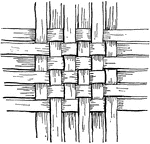
Checker Work Basket Weave
"The simplest form of woven basketry and that in most general use for large baskets is checker work,…

Coiled Work Basket Weave
"Coiled baskets are made by sewing over and over with some sort of flexible material, each stitch interlacing…
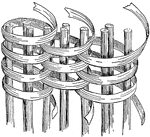
Coiled Work Basket Weave
"Coiled baskets are made by sewing over and over with some sort of flexible material, each stitch interlacing…
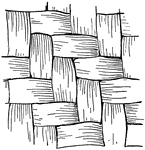
Twill Work Basket Weave
"The style of weaving common in baskets made of cane is known as twill work. This consists in passing…
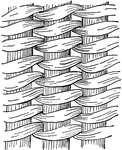
Twined Work Basket Weave
"This is the most intricate and also the most beautiful of all styles of weaving. The warp consists…

Twined Work Basket Weave
"This is the most intricate and also the most beautiful of all styles of weaving. The warp consists…

Wicker Work Basket Weave
"Another common style is wicker work so frequently seen in willow baskets. This also is subject to a…

Lace Machine
"A section of part of a lace machine. E is the cylinder or beam upon which the lace is rolled as made,…

Shuttle for Looms
The term shuttle loom refers to any loom that uses a shuttle. Most looms use a shuttle of some sort,…
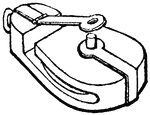
Snatch-block
"A block used in ships, having an opening in one side to receive the bight of a rope, chiefly used for…